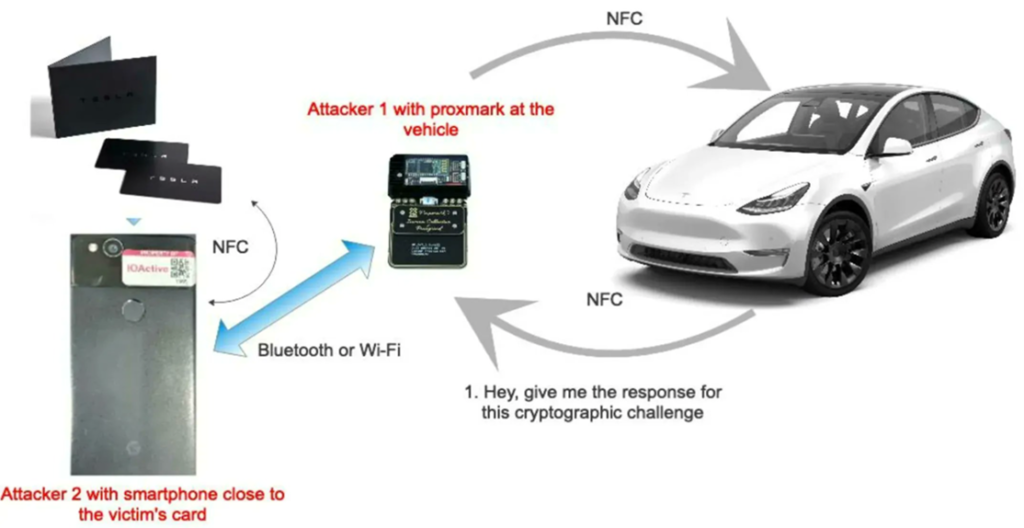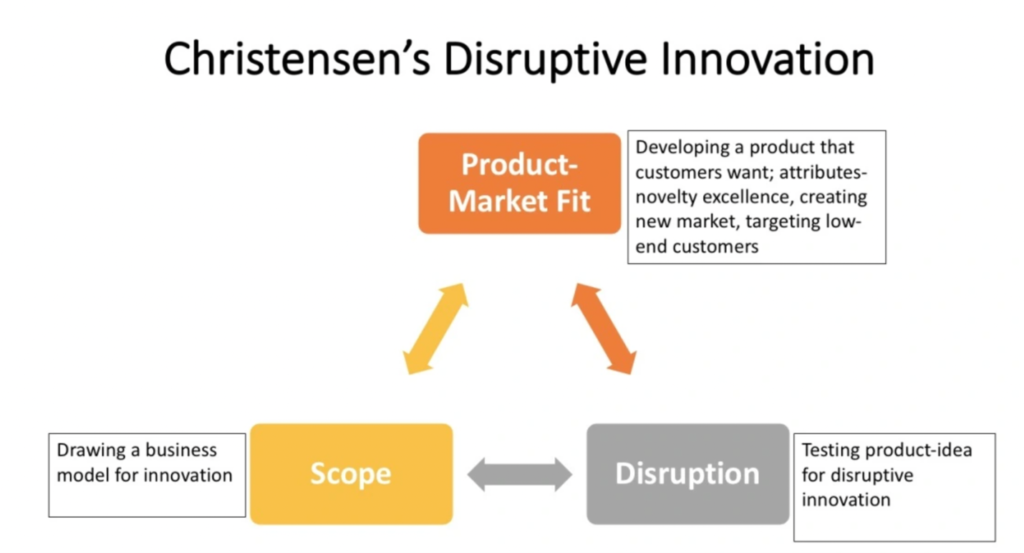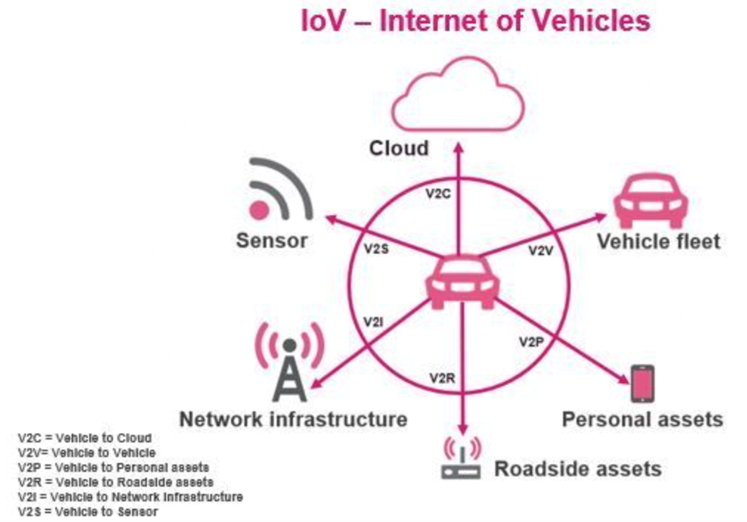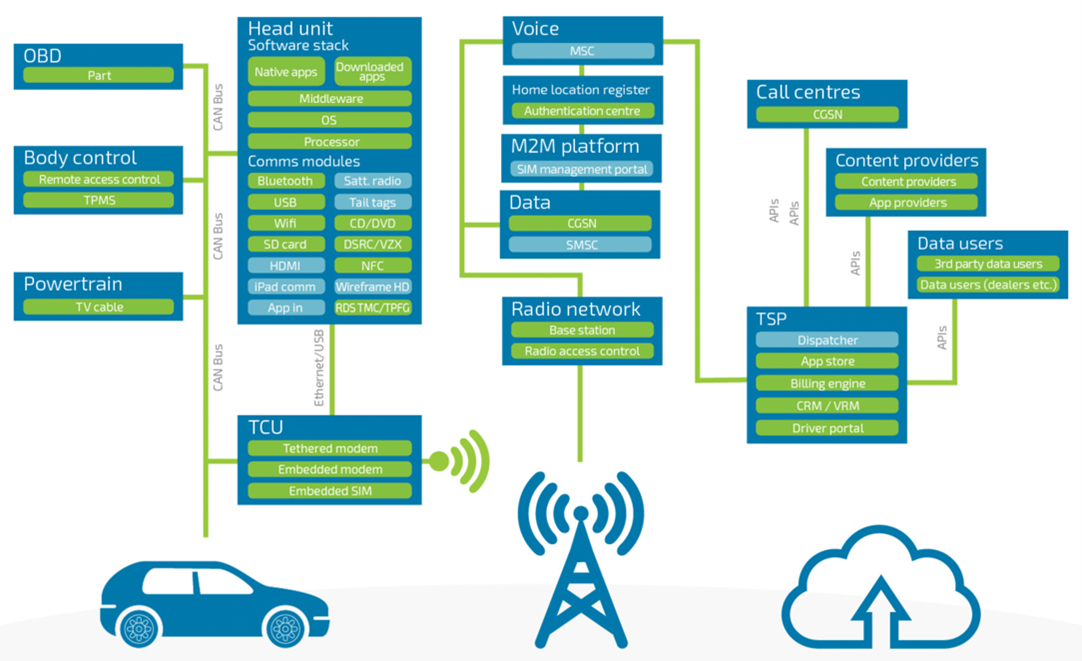Develop or Evaluate a Strategy for Tesla Big Data
Tesla as a major automobile company heavily attributes their success to their innovative ability and maintaining robust cyber security measures within the landscape of the digital economy. One critical theme that will be effective in understanding cyber security in Tesla is big data. The process entails the collection, credible analysis and eventual application of the vast data sets to improve security, maximise operational efficiency and develop consumer experience. With a heavy focus on big data, Tesla and essentially developed a comprehensive cybersecurity strategy which is capable of addressing current vulnerabilities and potentially anticipating future threats.
The relevance of big data in cyber security
The importance of big data is undeniable in cyber security, especially because it provides all the required tools to identify, detect, analyse, and respond to cyber threats. When it comes to Tesla, the implementation of advanced digital technologies into their electric vehicles (EVs) and as well as autonomous systems requires leverage in data. The vast amount of data sets that are often generated by the systems can be leveraged to improve security measures across different fronts, such as vehicle, operation, operation, charging infrastructure as well and user privacy.
Image: Cybersecurity threats leading to car hacking in tesla Vehicles

(Source: Tesla, n.d.)
Maximisation of vehicle and infrastructure security
Within the context of the chosen organisation, Tesla, the vehicles are essentially mobile computing platforms. Therefore, they are some of the most susceptible targets for cyber-attacks. To potentially protect these systems, big data can be utilised to have further monitoring and analysis of real-time data from the senses of the vehicle and the control systems. This particular approach can be extremely incremental which indicates the possible vulnerabilities in electrical infrastructure, necessitating the requirement for the cyber security measures as suggested by Acharya et al. (2020).
There is an interconnected nature of these stations with the power grid, presenting unique cyber security hindrances. Utilising big data analytics can be effective in recognising a plethora of patterns proceeding with cyber-attacks, therefore, allowing companies like Tesla to take proactive measures while safeguarding charging infrastructure. The power grid can also be safeguarded as well as suggested by Bharathidasan et al. (2022).
Methods that are data-driven to improve security
Implementation of data-driven methods and their successful application can improve the cyber security posture of Tesla. For instance, employing machine, learning algorithms and artificial intelligence can help Tesla to analyse vast data sets. This subsequently can enable the organisation to predict and reduce potential security threats. This particular approach is effective in a way that it helps identify new and evolving threats which traditional or usual security measures might overlook. According to the study conducted by. Kharlamova et al. (2020) reveal that the adoption of a data-driven method can enhance the cyber security of battery energy storage systems for Tesla. This is directly applicable to the operations of Tesla and its extended security measures.
Safeguarding consumer data and privacy
When it comes to the collection and processing of all sorts of personal data, with the help of the network services of Tesla, it warrants stringent data protection measures.
In the context of the biometric authentication methods and their mentation, the possibilities of improving the security of Tesla and its digital system can be effective as suggested by Eledlebi et al. (2022). This can essentially replace traditional public cryptography with biome data, and Tesla can essentially offer an additional layer of security, which is much more complicated for attackers to breach and take advantage of.
Top UK Assignment Samples
Organisational alignment and continuous improvement
To have credible utilisation of big data in the cyber security aspect, companies like Tesla need to have organisational alignment. This involves the application of disruptive, innovation models such as Christensen’s disruptive innovation model which is built on essentially five different pillars, such as destructive technologies, value, networks, business models, incumbents and trajectories. According to Baxter (2020), organisational alignment can improve innovation and operational efficiency in the long term which is exponential to maintain the competitive age in the digital economy.

Figure: Christensen’s Disruptive innovation model
(Source: Eledlebi et al., 2022)
The commitment of companies like Tesla to improve Cybersecurity, which is often highlighted by the discussions and considerations regarding vulnerabilities and breaches also can be effective as suggested by Team (2023). Credible maintenance of transparency and openness can help us to build trust with their consumers and a collaborative approach to potentially address, cyber security impediments.
Implementation plan
The objective of the present implementation plan is to create a comprehensive big data strategy to improve the cyber security of Tesla. It also considers improving operational efficiency and developing consumer satisfaction which essentially helps in acquiring a strategic advantage in the digital economy.
Data collection and integration
Within this particular process, step one involves the establishment of data collection infrastructure. This will involve equipping all Tesla vehicles and charging stations with enhanced data collection, and sensors. The use of technologies such as Internet of Things (IoT) devices and Telematic systems will be effective. Possible consequences such as continuous collection of operational data, user interactions, and environmental conditions will be considered. According to Acharya et al. (2020), further relevance of data from smart electric vehicle charging for cyber security is essential as it can help with the establishment of data collection infrastructure within Tesla.
Step two involves integration of data sources which requires action such as developing a unified data management platform to consolidate data from vehicles. This will also ensure the consolidation of data from charging stations and consumer interactions that happen in the process. The use of specific technology such as data lakes, data warehouses, and cloud storage will be incorporated. Possible outcomes will involve a single source of truth for all the data while facilitating compliance analysis by leveraging these data sets. According to Bharathidasan et al. (2022), the requirement for implementing various data sources for effective cyber security can be elemental in this step.
Get Assignment Help for Top Subjects
Establishment of data analytics and machine learning
This involves steps such as implementing advanced analytics. The action part requires applying advanced analytics to the process and effectively collecting data and real-time while analysing the same. Use of technologies, such as big data analytics platforms, for instance, Spark or Apache Hadoop can be used. Possible outcomes such as real-time, insights into vehicle performance, information into user behaviour and potential security threats can be unrivalled. According to Kharlamova et al. (2020), there is a sense of requirement for adopting data-driven methods to improve the Cybersecurity of energy storage systems.
Step four involves developing predictive models. The action part involves the credible utilisation of learning algorithms. This can help essentially develop predictive models for recognising and reducing potential cyber threats. The use of specific miss learning frameworks, for instance, TensorFlow and PyTorch can be effective in generating outcomes such as proactive, identification of threats and vulnerabilities. This will enable preemptive action by the organisation, Tesla. As suggested by Kharlamova et al. (2020), the use of machine learning within cyber security can be credible for anticipating and responding to evolving threats.
Improvement of cyber security measures
This involves step five which requires deploying normal detection systems. The intimation of the anomaly detection system can help continue the monitoring data while identifying signs of any unusual activity. Use of specific technology such as AI-based anomaly detection tools. For instance, Splunk or IBM QRadar can be incremental in generating outcomes such as immediate detection and possible response to potential cyber-attacks. According to Bharathidasan et al. (2022), real-time and anomaly detection is exponential to maintain the credible security of interconnect assistance within companies like Tesla.
Step six involves fortifying the authentication protocol. Involvement of biometric authentication methods can improve the security system in Tesla. According to Eledlebi et al. (2022), the possible benefits of replacing usual cryptographic methods with biometric authentication are extremely effective and can be efficient for long-term sustainability within business development.
Data privacy and user trust
This involves step seven, which requires implementing privacy-enhancing technologies. For instance, deploying privacy-enhancing technologies (PETs) can be incremental in ensuring user data protection. The use of specific technology, such as data, nonce, encryption and differential privacy techniques will be effective in generating consequences such as improved trust and compliance with the data protection regulations for Tesla. According to Tesla (n.d.), the commitment of the company to privacy and transparency in data use helps build consumer trust in the long term.
Step eight involves transparent communication with users. This involves regular updates for the users on data usage policies and cyber security measures. Specific consumer relationships, management systems and security communication channels can help improve consumer awareness. It can build confidence in the companies, and data handling practices. According to Team (2023), the use of transparency can improve cyber security efforts which can essentially improve consumer trust and loyalty.

Figure: Cybersecurity structures of EVs (IOV)
(Source: Baxter, 2020)
Organisational alignment and continuous improvement
This involves step nine which requires hosting the cyber security culture within Tesla. Educating all of their professionals and employees on board about the relevance of cyber security and data protection can be effective.
Step 10 involves the successful establishment of a continuous improvement loop. Incorporating a feedback loop can help improve the assessment process and elevate cyber security measures within Tesla. Conducting performance monitoring tools, and regular security audits can generate consequences such as continuous enhancement of cyber security protocols to address newly emerging threats. According to Kharlamova et al. (2020), consistent, and continuous improvement can ensure cyber security measures and also evolve within Tesla along with the emerging threats.

Figure: Cybersecurity infrastructure of Tesla EVs
(Source: Tesla, n.d.)
Critical evaluation of current status
Current issues:
The value of extensive knowledge is emphasized in cyber security, particularly because it provides all the necessary tools to identify, differentiate and investigate cyber threats (Tesla, n.d.). Inside the setting of the chosen association, Tesla, the vehicles are portable computing stages. Therefore, they are a few of the foremost vulnerable targets for cyber-attacks. This is a major concern for a company like Tesla which poses significant impediments (Kharlamova et al., 2020).
To possibly ensure these frameworks, enormous information can be used to encourage checking and investigation of real-time information from the senses of the vehicle and the control systems. The setting of executing enormous data within the cyber security conventions of EV charging stations is similarly exponential (Tesla, n.d.). There’s an interconnected nature of these stations with the control framework, displaying interesting cyber security obstacles. This hence can empower the association to foresee and diminish potential security dangers. This specific approach is effective in a way that it makes a difference in identifying new and advancing dangers that conventional or normal security measures might ignore (Tesla, n.d.). Within the setting of buyer information assurance, usually an exponential viewpoint of the cyber security technique of Tesla.
When it comes to the collection and handling of all sorts of individual information, with the assistance of the arranged administrations of Tesla, it warrants rigid information security measures (Tesla, n.d.). To have valid usage of enormous information within the cyber security aspect, companies like Tesla ought to have authoritative arrangements. This includes the application of troublesome, development models such as Christensen’s disruptive innovation demonstration which is built on basically five distinctive columns, such as dangerous innovations, esteem, systems, commerce models, occupants and directions (Tesla, n.d.).
Feeling Overwhelmed By Your Assignment?
Get assistance from our PROFESSIONAL ASSIGNMENT WRITERS to receive 100% assured AI-free and high-quality documents on time, ensuring an A+ grade in all subjects.
Justification of the chosen areas
Collection and integration
Rationale
Dedication and integration are the foundation of any big data strategy. Within the concept of vehicles in the charging infrastructures of Tesla, if data sets can be properly harnessed, it can help generate profound insights into operational performance and cyber security threats.
Criticality
The use of comprehensive data collection will help Tesla to monitor and optimise vehicle performance. This can also essentially identify consumer usage patterns develop better product enhancement and generate consumer satisfaction as highlighted by Acharya et al. (2020). With the aspect of data platforms, it can facilitate real-time analysis and anomaly detection. This can be extremely effective for further identification and reducing cyber threats promptly as highlighted by Bharathidasan et al. (2022).
Data analytics and machine learning
Rationale
Improved data analytics and machine learning are the core aspects of predictive and proactive security. With the application of these technologies, Tesla will be able to transform all the raw data into actionable intelligence.
Criticality
Use of credible predictive models that are developed through machines. Learning can help recognise potential threats before manifestation will enable Tesla to take pre-emptive actions as suggested by Kharlamova et al. (2020). The use of real data will also incapacitate companies like Tesla to optimise energy consumption and overall efficiency.
Improved cyber security measures
Rationale
With the sophistication of cyber-attacks, robust, cyber security measures will be affected where implementation of AI-based anomaly detection systems and biometric authentication will fortify the defences of Tesla against unauthorised access.
Criticality
The use of AI-based systems in the analysis of real-time, data will help detect and respond to suspicious activities. The use of biometric authentication will also help develop, a personalised and highly secure method of access. (Bharathidasan et al., 2022)
Data privacy and user trust
Rationale
In the digital age, privacy is important for consumers which necessitates the commitment of Tesla to save our data and maintain transparency to build and retain consumer trust.
Criticality
Involvement in regulatory compliance where Tesla displays strict, international data protection regulations can help avoid legal repercussions and fines (Tesla, n.d.). transparent data policies and practices can help build trust and loyalty with the consumers because the brand will be more likely to respect and protect the privacy of their customers (Team, 2023).
Recommendation and implementation plan
i. Project Plan to Implement the Selected Strategy
Phase 1: Planning and Preparation (Months 1-2)
Describe Objectives: Briefly describe the objectives of the huge Information procedure with emphasis on cybersecurity, operations efficiency and satisfaction of clients.
Gather Group: Make a cross-functional group with specialists in information science, cybersecurity, IT, and vehicle innovation.
Phase 2: Data Collection Infrastructure (Months 3-6)
Enable the integration of advanced sensors in cars and charging stations to collect data through IoT sensors.
Set up Information Administration Stage: Create a bound-together stage utilizing cloud capacity and information lakes to coordinate different information sources.
Phase 3: Data Analytics and Machine Learning Implementation (Months 7-12)
Enhance analytics capabilities: Establish extensive informational phases like Apache Hadoop and Commence.
Make Prescient Models: Utilize machine learning systems such as TensorFlow and PyTorch to create models for dangerous locations and operational experiences.
Phase 4: Enhancing Cybersecurity Measures (Months 13-18)
Convey Peculiarity Discovery: Actualize AI-based frameworks for real-time irregularity discovery.
Facilitated Biometric Affirmation: Utilize biometric sensors to affirm client data in automobiles and apps.
Phase 5: Data Privacy and Organizational Alignment (Months 19-24)
Security improvements, such as encryption and anonymization, are employed to safeguard client data.
Specialist Arrangement: Conduct standard cybersecurity arrangement courses and workshops.
Key Performance Measures
| Threat detection rate | System uptime | Customer satisfaction | Data breach incidence | Employee training compliance |
| Number of detected and mitigated threats | Operational uptime of data collection | Surveys and feedback to gauge consumer satisfaction | Tracking down the number of data breaches | Monitoring the number of employees displaying compliance |
Key Processes for Success
The centralised organisation should contain information from a limited number of sources to ensure consistency. Real-Time Checking: Reliably filter data streams for irregularities and potential risks. Refine all innovations, counting data analytics and cybersecurity frameworks, to remain current with the most recent changes. Client Feedback: Collect and dissect client criticism on a standard premise to progress data with respect to practices.
Importance of Relevant Digital Technologies
Colossal Information Analytics Stages: Defiant devices like Apache Hadoop and Start are basic for organizing expansive datasets, choosing bits of data, and pushing decision-making designs. TensorFlow and PyTorch are two machine learning systems that can assist you make prescient models that can distinguish potential cybersecurity issues and advance vehicle execution. AI-Assisted Peculiar Zone Frameworks are basic for real-time location and quick reaction to distinguished anomalies or dangers.
IoT sensors and telematics are basic for collecting real-time information from automobiles and charging stations. These improvements give the unpleasant actualities basic for assessment and hazard divulgence. Cloud Capacity and Information Lakes: The essential strategy for safely and productively putting away tremendous sums of information, permitting for broad information investigation.
Reference List
Acharya, S., Dvorkin, Y., Pandžić, H. and Karri, R., 2020. Cybersecurity of smart electric vehicle charging: A power grid perspective. IEEE access, 8, pp.214434-214453.
Baxter, M., (2020). Four benefits of organisational alignment.
Bharathidasan, M., Indragandhi, V., Suresh, V., Jasiński, M. and Leonowicz, Z., 2022. A review on electric vehicle: Technologies, energy trading, and cyber security. Energy Reports, 8, pp.9662-9685.
bluegoatcyber.com. (2024). Navigating Tesla’s Cybersecurity Challenges: What You Need to Know – Blue Goat Cyber. [online] Available at: https://bluegoatcyber.com/blog/navigating-teslas-cybersecurity-challenges-what-you-need-to-know/.
Chopra, R.K. and Srivastava, A., 2021. Legal Issues Surrounding Cyber Security and Privacy on Automated Vehicle. In Autonomous Driving and Advanced Driver-Assistance Systems (ADAS) (pp. 359-380). CRC Press.
Eledlebi, K., Yeun, C.Y., Damiani, E. and Al-Hammadi, Y., 2022. Empirical studies of TESLA protocol: Properties, implementations, and replacement of public cryptography using biometric authentication. IEEE Access, 10, pp.21941-21954.
Kharlamova, N., Hashemi, S. and Træholt, C., 2020, December. The cyber security of battery energy storage systems and adoption of data-driven methods. In 2020 IEEE Third International Conference on Artificial Intelligence and Knowledge Engineering (AIKE) (pp. 188-192). IEEE.
Kharlamova, N., Hashemi, S. and Træholt, C., 2020, December. The cyber security of battery energy storage systems and adoption of data-driven methods. In 2020 IEEE Third International Conference on Artificial Intelligence and Knowledge Engineering (AIKE) (pp. 188-192). IEEE.
Kim, K., Kim, J.S., Jeong, S., Park, J.H. and Kim, H.K., 2021. Cybersecurity for autonomous vehicles: Review of attacks and defense. Computers & security, 103, p.102150.
Kukkala, V.K., Thiruloga, S.V. and Pasricha, S., 2022. Roadmap for cybersecurity in autonomous vehicles. IEEE Consumer Electronics Magazine, 11(6), pp.13-23.
Kumar, S.V., Mary, G.A.A., Suresh, P. and Uthirasamy, R., 2021, February. Investigation on cyber-attacks against in-vehicle network. In 2021 7th International Conference on Electrical Energy Systems (ICEES) (pp. 305-311). IEEE.
Manulis, M., Bridges, C.P., Harrison, R., Sekar, V. and Davis, A., 2021. Cyber security in new space: Analysis of threats, key enabling technologies and challenges. International Journal of Information Security, 20, pp.287-311.
Metere, R., Pourmirza, Z., Walker, S. and Neaimeh, M., 2022. An Overview of Cyber Security and Privacy on the Electric Vehicle Charging Infrastructure. arXiv preprint arXiv:2209.07842.
Muhammad, Z., Anwar, Z. and Saleem, B., 2023, February. A cybersecurity risk assessment of electric vehicle mobile applications: findings and recommendations. In 2023 3rd International Conference on Artificial Intelligence (ICAI) (pp. 45-51). IEEE.
Muhammad, Z., Anwar, Z., Saleem, B. and Shahid, J., 2023. Emerging cybersecurity and privacy threats to electric vehicles and their impact on human and environmental sustainability. Energies, 16(3), p.1113.
Phipps, J. (2024). Tesla Hacks Show Importance of Protecting Connected Devices. [online] eSecurity Planet. Available at: https://www.esecurityplanet.com/trends/tesla-hacks-highlight-importance-of-protecting-connected-devices/.
Team, T.A.P. (2023). Why Tesla’s Openness About Cyber Security Deserves Kudos. [online] Acora. Available at: https://acora.com/2023/03/27/tesla-hacked/.
tesla. (n.d.). Cyber Security. [online] Available at: https://www.tesla.net/cyber-security.
Tesla. (n.d.). Privacy. [online] Available at: https://www.tesla.com/privacy.
Tesla. (n.d.). Product Security. [online] Available at: https://www.tesla.com/legal/security.
Vatin, N.I. and Kumar, R.R., 2024. Blockchain-Enabled Cybersecurity Framework for Electric Transportation Systems. In MATEC Web of Conferences (Vol. 392, p. 01174). EDP Sciences.
Wiraeus, D. and Creelman, J., 2019. Agile strategy management in the digital age. Palgrave Macmillan.
Ye, J., Guo, L., Yang, B., Li, F., Du, L., Guan, L. and Song, W., 2020. Cyber–physical security of powertrain systems in modern electric vehicles: Vulnerabilities, challenges, and future visions. IEEE Journal of Emerging and Selected Topics in Power Electronics, 9(4), pp.4639-4657.






